15 Ways to Lose 3 Pounds Per Week by Walking

Depending on your starting weight, losing 3 pounds per week can be achieved with walking and other lifestyle changes. The more weight you have to lose, the faster it will come off in the beginning. Walking is an excellent way to encourage weight loss as it's free, straightforward, and can be adapted to a person's abilities/strength. "Generally, to lose 1 to 2 pounds a week, you need to burn 500 to 1,000 calories more than you consume each day, through a lower calorie diet and regular physical activity," says the Mayo Clinic. In order to hit 3 pounds a week, more calories need to be burned. Here are 15 ways you can lose 3 pounds a week by walking.
Get Your Steps In
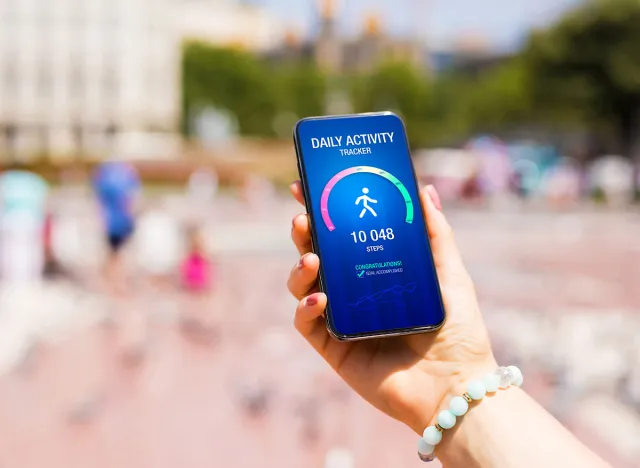
While 10,000 steps a day is a common goal, try hitting 15,000 for the extra calories burned. "It takes effort, but we can accumulate 15,000 steps a day by walking briskly for two hours at about a four-mile-per-hour pace," Dr. William Tigbe, a physician and public health researcher at the University of Warwick, tells the New York Times. "This can be done in bits. Our metabolism is not well-suited to sitting down all the time."
Invest In Good Shoes

Get decent walking or running shoes to support your efforts. "Because feet swell throughout the day, aim to shop for shoes after exercise or at the end of the day," advises Homeland Security. "This will help ensure that the shoes you try on feel comfortable when your feet are at their largest."
Walk Faster

Want to burn more calories? Walk faster. "If you add 30 minutes of brisk walking to your daily routine, you could burn about 150 more calories a day," Katherine Zeratsky, RD, LD, tells the Mayo Clinic. "Of course, the more you walk and the quicker your pace, the more calories you'll burn."
Walk At An Incline

Walking at an incline increases calorie burn and weight loss. "The higher you set the incline, the more energy your body is forced to use to help activate your glutes, quadriceps, and calves, all of which have to put in overtime when the incline is increased," certified personal trainer Chrys Crockett tells NBC News. "This increase of energy burns more calories and, depending on your weight and cardiovascular endurance, can also burn more fat."
RELATED: 12-3-30 Walking Method: 20 Proven Tips to Lose Weight Faster
Stay Hydrated

Don't forget to drink plenty of water to aid your fat-burning efforts. "Thirst, which is triggered by mild dehydration, is often mistaken for hunger by the brain," Melina Jampolis, internist and board-certified physician nutrition specialist, tells Johns Hopkins Health. "You may be able to decrease appetite by drinking water if you are, in fact, low in water, not calories."
Walk With a Friend
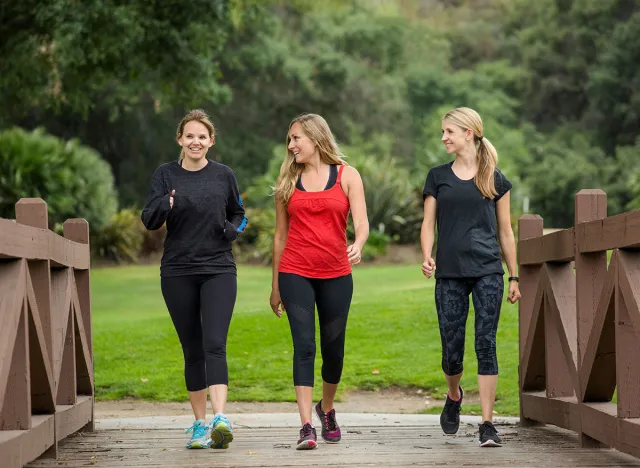
Walking with a friend makes the process so much more enjoyable. Not only are you losing weight, but you're getting the mental health benefits of social time. Working out with a friend also helps keep you accountable.
Get Competitive

Why not start a friendly competition group to see who can get the most steps in every week? This may encourage you to walk as much as possible, and it's very motivating to know other people can see what your achievements are. Some apps have functions where you can show others what your daily step count is.
Set Daily Goals
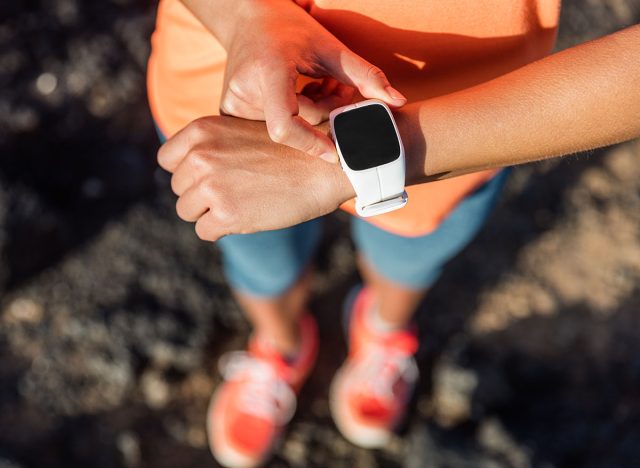
Setting goals every day can help you stay accountable. For example, setting a step counter on your watch or smartphone. Daily goals will also help keep you motivated.
Keep Your Hands Off Your Treadmill

"One common mistake people make is setting the machine to a pace that requires you to hold on," Crockett tells NBC News. "When adjusting the incline or speed, make sure it is set at a pace that you can safely walk or run on without hanging on for dear life. This takes away from the muscle engagement and energy required to actually walk or run at the level you set it to."
Listen To Music

Listening to music can take your mind off any discomfort. "As our brain focuses on music, we may be less aware of fatigue and strain on our cardiovascular system and muscles during exercise. This may also explain why workouts seem to go by faster when we listen to music," Dr. Paul Wright, senior vice president and system chair of the Neuroscience Institute, tells Nuvance Health.
Eat More Protein

Protein can give your workouts (and recovery) a boost. "Your first meal of the day — hopefully for everyone that's breakfast — should have at least 30 grams of protein. That's really important, especially if you're trying to maximize muscle growth," Sarah Wardlaw, MS, L/ATC, CE, tells Mass General Brigham. "Then aim for another 30 grams with each meal. Add protein-rich snacks throughout the day, such as protein bars, homemade protein balls made from protein powder, cottage cheese, or meat sticks."
RELATED: 15 Quick Ways to Lose Body Fat Percentage in a Week
Try Interval Training
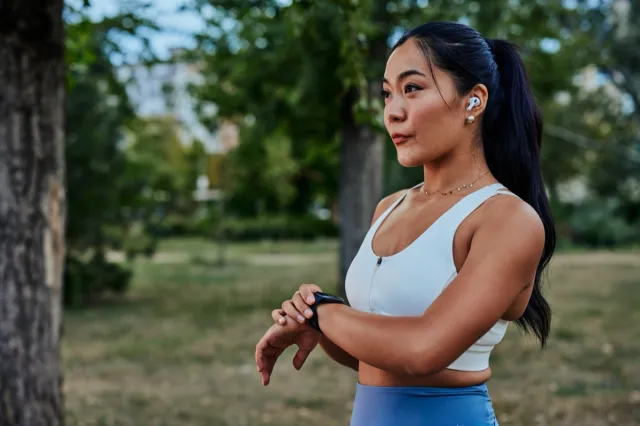
Interval training can make your walks more intense. "You can also alternate periods of brisk walking with leisurely walking," say the experts at the Mayo Clinic. "This type of interval training has many benefits, such as improving cardiovascular fitness and burning more calories than regular walking. And interval training can be done in less time than regular walking."
Just Keep Moving
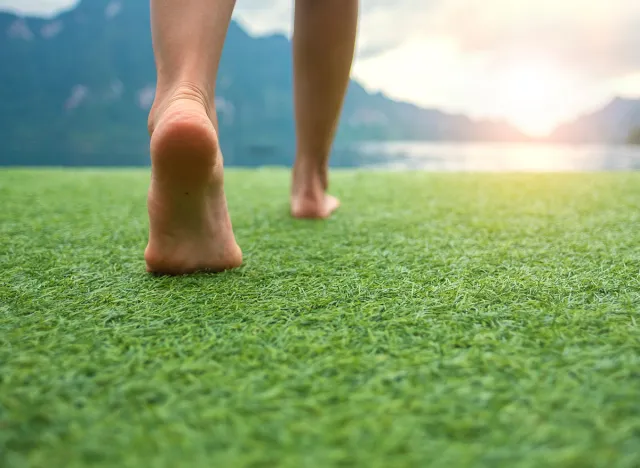
If you don't have time for long walks every day, just do whatever you can. "Anything that gets you moving instead of just sitting or lying down is going to be beneficial for you in the long run," exercise physiologist Jordan Boreman, MS, CES, tells the Cleveland Clinic. "By walking in place, you're raising your heart rate, which is going to signal to your body to start pumping more oxygen and blood to your muscles to help them move more efficiently, thus burning more calories."
Add Strength Training

Using dumbbells while walking can add intensity and calorie burning to your walking routine. "Whether you're on the treadmill or you hop off on your 'rest interval,' you can add weight to keep your heart rate up and add some strength training into the mix," Crockett tells NBC News.
30 Minutes of Walking
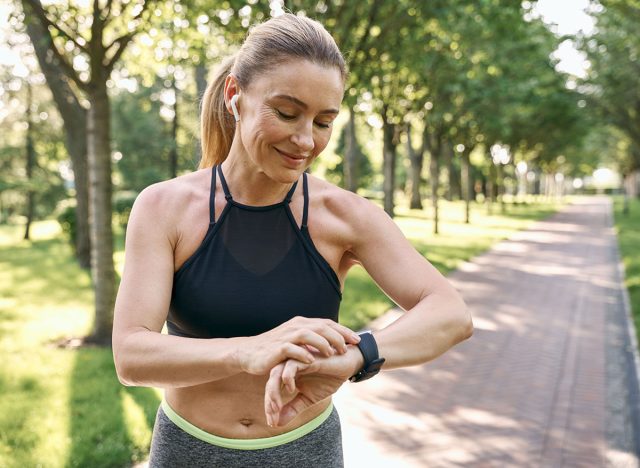
Experts say that at least 30 minutes of walking is the sweet spot. "If you walk 2 miles, you'll burn 200 calories, mostly from carbs but a little from fat because, as you reach the end of your walk, when you're using mostly slow glycolysis and your oxidative system," according to HPRC. "If you run 2 miles, you'll still burn 200 calories, but you will do so faster than with walking and almost exclusively from carbs. Since 2 miles is a fairly short distance, you will probably finish the run in less time than it takes for your body to start the fat-oxidation process. A cardio session should be at least 20–30 minutes and at an intensity of about 70% of your max heart rate in order to maximize fat loss during exercise."
💪🔥Body Booster: Walking at an incline will help you reach your weight loss goal faster.




